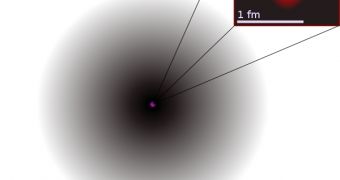Following important advancements in the field of quantum physics and energy, scientists are currently working on a way to create Schrodinger's cat, a macroscopic object that is both dead and alive at the same time. It takes advantage of oddities recorded in quantum mechanics for electrons and molecules, which researchers say could translate to large objects as well.
However, the potential maximum sizes these hypothetical objects could reach is not yet clearly determined, but experts from the University of Arizona in Tucson took the first steps towards proving that a system of two objects can act as a whole, or as two different components working independently from each other.
In order to prove this, physicists Mishkat Bhattacharya and Pierre Meystre conducted a series of experiments in a relatively new field of science, cavity optomechanics. This discipline deals with the way in which fully mechanical systems can be controlled via the use of light. In their experiments, the two used two thin, millimeter-scale membranes, which they subjected to the influence of photons emitted by a laser.
The carefully-calibrated light ensures that the two membranes act as a single molecule, regardless of the distance they are from each other.
According to a paper published last October in the journal Physical Review A, the two membranes can be cooled by the light in such a manner that they behave like a single atomic molecule. At the same time, the entire system can take two behavioral patterns – one in which the membranes move together, and one in which they resonate at different frequencies.
Bhattacharya and Meystre say that shining specific laser light frequencies on the ensemble can make just one of the membranes resonate, but that the behavior will be transmitted onto the other via quantum entanglement, which proves the unity of the system.
This type of research plays a very important role in the field of quantum physics, because it may very well offer researchers and experts a fresh insight on how the transition between the quantum world and the real world is done.
But demonstrating membrane entanglement via the use of lasers only is a very challenging task that requires a great deal of calculations and expertise. In other studies, scientists proved that two membranes could be forced to entangle with each other by certain types of laser, and to remain this way until the photon beam would stop.

 14 DAY TRIAL //
14 DAY TRIAL //